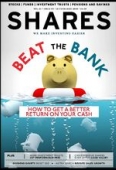Archived article
Please note that tax, investment, pension and ISA rules can change and the information and any views contained in this article may now be inaccurate.
How do fund managers pay for new investments?

How does an investment trust pay for a new investment if it hasn’t got inflows of cash from investors like other types of funds?
It’s easy to understand once you’ve grasped the difference between investment trusts and other types of funds, namely unit trusts and Oeics.
A unit trust or Oeic is an open-ended fund. The number of units (rather than shares) flex in line with the number of people who are putting money in or taking money out of the fund.
Every time someone invests in an open-ended fund, the fund manager has to make a decision whether to keep the money in cash or put it to work in the markets by making an investment.
A really popular fund with constant inflows of money will have to keep finding new investment ideas or top up existing holdings. In reverse the fund manager may have to sell something to generate cash to give exiting investors their money back.
An investment trust is known as a closed-ended fund and has a fixed amount of shares in issue. You invest in its shares via the stock market. The money you pay for the shares doesn’t go to the fund manager but rather to the other investor selling them to you. (The latter is a very simplistic explanation, in reality the transaction process is more complicated).
HOW DOES IT TYPICALLY WORK?
The typical model for an investment trust is to raise a lump sum of cash when they join the stock market, say £100m. They potentially tap shareholders on an infrequent basis for more money by issuing new shares should they come across a pipeline of new investment opportunities that can’t be funded by existing cash.
A fund manager can generate cash for new investments by selling down some of their holdings or they often receive cash through dividend payments from their underlying holdings which can be recycled into new ideas. They can also borrow money to make new investments or they can issue new shares to raise more cash.
The disadvantage of unit trusts and Oeics is that fund managers could run out of good ideas and invest in bad companies if they are under pressure to deploy new cash.
Equally, investment trust fund managers may have lots of good ideas but not enough cash to take advantage so they are missing out.
Raising cash by issuing new shares will be at the mercy of the market mood and sometimes investors just don’t feel like supporting fundraisings.
Borrowing money is risky if a manager can’t find investments which generate a greater return than the cost of debt. Or the trust may have already reached the maximum amount of debt it can have under rules set by the board of directors.
Important information:
These articles are provided by Shares magazine which is published by AJ Bell Media, a part of AJ Bell. Shares is not written by AJ Bell.
Shares is provided for your general information and use and is not a personal recommendation to invest. It is not intended to be relied upon by you in making or not making any investment decisions. The investments referred to in these articles will not be suitable for all investors. If in doubt please seek appropriate independent financial advice.
Investors acting on the information in these articles do so at their own risk and AJ Bell Media and its staff do not accept liability for losses suffered by investors as a result of their investment decisions.
Issue contents
Big News
- BHP, Royal Bank of Scotland, Reckitt Benckiser and other news
- Retail sales figures return to form in January
- Eyes on March update as dividend doubts beset SSE
- Global dividends expected to grow by 5.1% in 2019
- Is HSBC’s 6% yield enough compensation for disappointing results?
- Is the US about to deliver a growth shock?

 magazine
magazine








